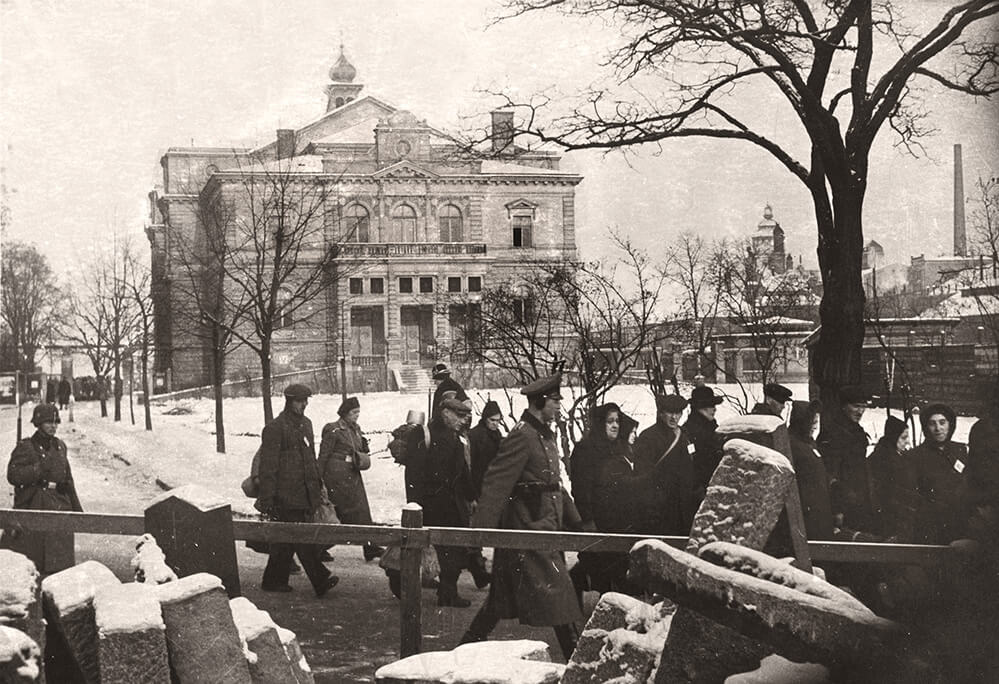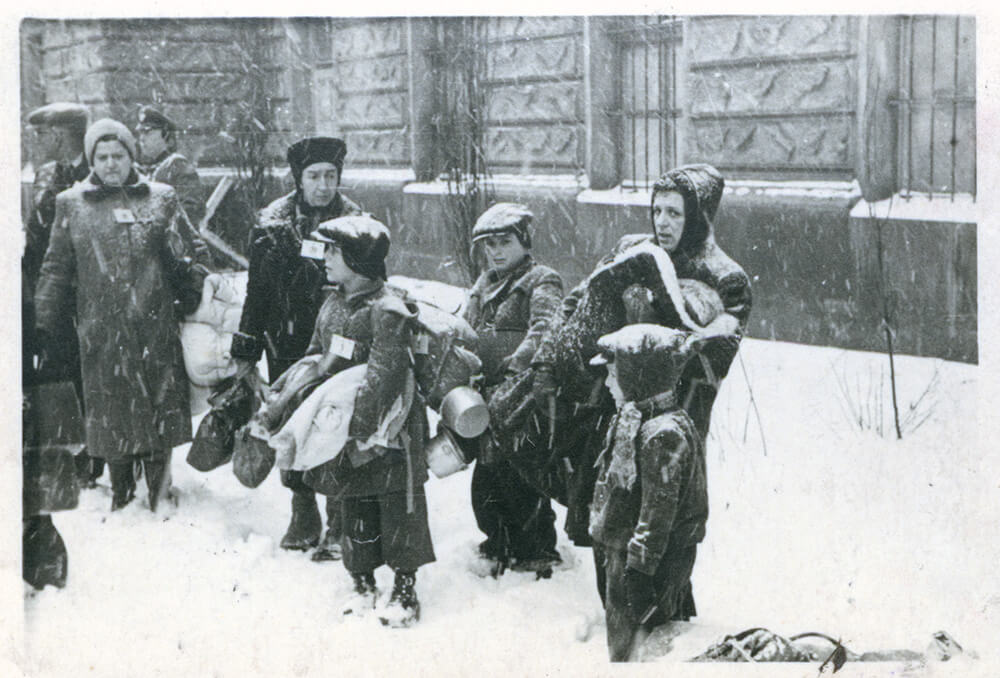Pilsen

Jewish deportees en route to the railway station from the Sokol Building assembly point.
Jewish Museum in PragueThe importance of Pilsen as an area of heavy industry was undoubtedly one of the reasons why its local Jewish population was one of the first to be deported. In January 1942, the Sokol Building was selected as the assembly point for the Jews of Pilsen due to its proximity to the nearby railway station. The local Jewish religious community’s auxiliary service helped out with the organization of transports, such as procuring necessary items for deportees, packing their luggage, and caring for their young children. The isolated, the elderly, and the inform were dependent on their assistance. The Jews of Pilsen were summoned to appear at the assembly point at hourly intervals. They were advised to take with them a supply of food for five days and, above all, warm clothing. A collection service took large pieces of luggage to the assembly point. The deportees were subsequently escorted to the railway station by a unit of the Schutzpolizei (German Security Police). Each prisoner wore a neck tag bearing their name, train designation and serial number.
Three transports (designated by the letters R, S, T) were dispatched from Pilsen on 18, 22 and 26 January 1942. Only 209 of the 2,613 deportees survived.

Jews from the Pilsen region boarding Transport T to Terezín in January 1942. Lily Arnsteinová with her youngest daughter Blanka (b. 1939) in her arms and her three sons, Jan, Pavel and Tomáš, in front of the Sokol Building. They all perished in Auschwitz–Birkenau.
Ethnographic Museum of the Pilsen Region